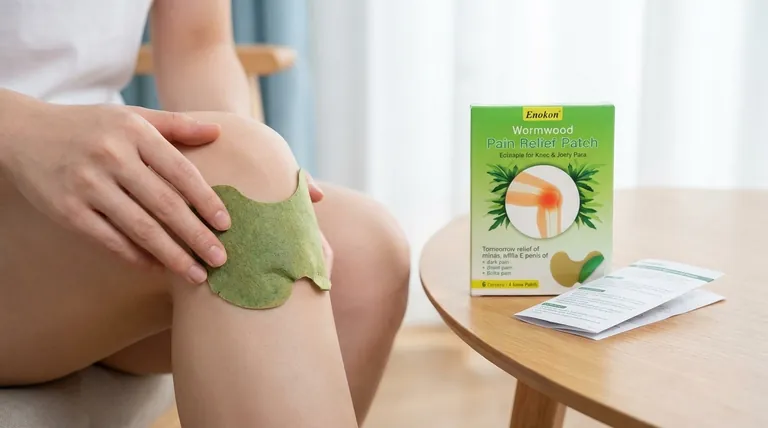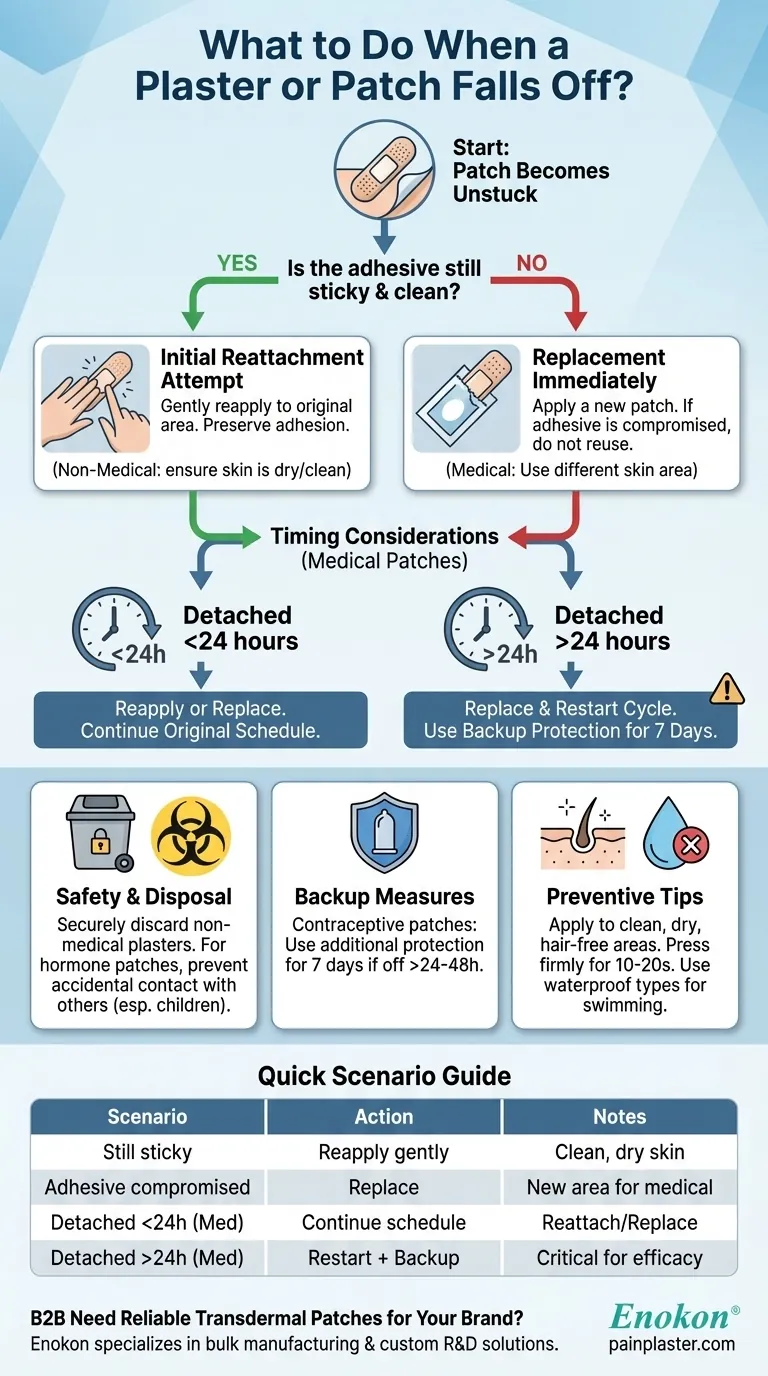When a plaster or patch falls off or becomes unstuck, the appropriate action depends on factors like adhesion quality, time elapsed, and whether it's a medical patch (e.g., contraceptive). Generally, reattachment is attempted first if the adhesive remains intact. If unsuccessful, a replacement is applied, with attention to timing and potential need for backup measures (e.g., contraception). For medical patches, specific protocols govern replacement cycles and supplementary precautions.

Key Points Explained:
-
Initial Reattachment Attempt
- If the plaster/patch is still sticky and clean, gently reapply it to the original area. This preserves adhesion continuity and avoids unnecessary waste.
- For non-medical plasters (e.g., wound covers), ensure the skin is dry and free of oils or debris to improve re-sticking.
-
Replacement When Reattachment Fails
- If the adhesive is compromised, apply a new plaster/patch immediately. For medical patches (e.g., contraceptive), place the replacement on a different skin area to avoid irritation.
- Note: Avoid wearing two patches simultaneously unless specified (e.g., some hormone therapies require overlapping during transitions).
-
Timing Considerations
-
Medical Patches:
- If detached <24 hours: Reapply or replace and continue the original schedule.
- If detached >24 hours: Replace and restart the cycle or use backup contraception for 7 days, depending on the product’s phase (e.g., Week 1 vs. Week 3).
- Standard Plasters: Replace and remove at the originally planned time to maintain hygiene or treatment duration.
-
Medical Patches:
-
Safety and Disposal
- For hormone patches: Ensure the fallen patch isn’t accidentally stuck to others (especially children) due to active ingredient risks. Return unused patches to a pharmacist for disposal.
- Discard non-medical plasters securely to prevent accidental re-adhesion to surfaces or skin.
-
Backup Measures
- Contraceptive patches: Use additional protection (e.g., condoms) for 7 days post-replacement if the patch was off >24–48 hours, as efficacy may be reduced.
- Wound plasters: Monitor for infection if the wound was exposed during detachment.
-
Preventive Tips
- Apply patches to clean, dry, hair-free areas (avoid joints or high-friction zones).
- Press firmly for 10–20 seconds after application to enhance adhesion.
- For water exposure (e.g., swimming), use waterproof plasters or reinforce edges with medical tape.
By following these steps, you ensure effective adhesion, maintain treatment schedules, and mitigate risks associated with patch/plaster failure. Always refer to product-specific guidelines for medical patches.
Summary Table:
| Scenario | Action | Notes |
|---|---|---|
| Plaster still sticky | Reapply gently to clean, dry skin. | Avoid oils/debris for better adhesion. |
| Adhesive compromised | Replace with a new plaster/patch. | For medical patches, apply to a different area. |
| Detached <24 hours | Reattach or replace; continue original schedule. | Applies to medical patches (e.g., contraceptive). |
| Detached >24 hours | Replace and restart cycle or use backup protection (e.g., condoms). | Critical for hormone patches to maintain efficacy. |
| Water exposure | Use waterproof plasters or reinforce edges with medical tape. | Prevents premature detachment during activities like swimming. |
Need reliable transdermal patches or plasters for your healthcare brand or pharmacy? Enokon specializes in bulk manufacturing of high-quality, adhesive-optimized pain plasters and medical patches. Our technical expertise ensures consistent adhesion and custom R&D solutions tailored to your needs. Contact us today to discuss your requirements and elevate your product line!
Visual Guide

Related Products
- Natural Herbal Wormwood Patch Pain Plaster
- Medical Cooling Gel Patches for Fever Cooling Patches
- Capsaicin Chili Medicated Pain Relief Patches
- Asthma Cough and Pain Relief Patch for Adults and Kids
- Far Infrared Deep Heat Relief Patches Medicated Pain Relief Patches
People Also Ask
- Who should consult a healthcare professional before using pain relief patches? Ensure Your Safety with Medical Advice
- Are pain relief patches safe for sensitive skin? Your Guide to Safe Use & Skin Testing
- What medical conditions should be reported before using buprenorphine patches? Essential Safety Guide
- When should the pain relief patch not be used? Key Safety Rules to Avoid Risks
- What are pain relief patches? Discover Targeted, Drug-Free Pain Management Solutions
















